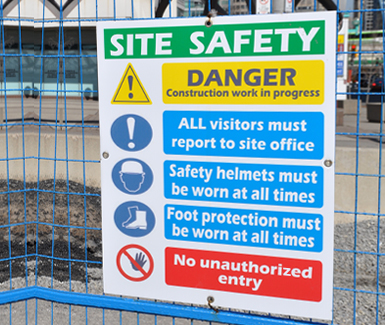Your food processing facility’s commitment to safety starts with being prepared. How do you prepared to be… prepared? With your food plant’s emergency action plan (EAP): a required Occupational Safety and Health Administration (OSHA) document that defines employer and employee actions during workplace emergencies. While emergency action plans that meet minimum requirements may include emergency information and procedures, they still may not contain enough detail to ensure the safest response to dangerous situations. Your plan must be comprehensive, eliminating all confusion and hesitancy in case of an emergency. A non-comprehensive plan — one lacking extensive instruction or failing to address each emergency — may add confusion to the situation.
While a comprehensive EAP will include more than what is detailed below, you should focus on the following five crucial elements for every identified emergency:
1. Procedures for reporting the emergency
Some facilities’ alarms are designed to automatically notify local emergency responders as soon as they are triggered. However, if they do not, designated personnel will have to do so. Your EAP should list the appropriate authorities for specific emergencies.
For example, a chemical leak requires a trained HAZMAT team, which may not be as easy to reach as the fire department. Stellar’s team of experts includes HAZMAT-trained technicians. It’s a best practice for every plant to have a team of personnel trained for chemical releases, especially if the plant is in a remote location and emergency response may be delayed.
However, if you do not have a HAZMAT team in-house, ensure contact information for appropriate emergency responders is readily available in your EAP. You do not want your workers scrambling to find this information during a dangerous situation.
Your EAP should also include an explanation of your facility’s alarm system. If there are multiple alarm systems, or distinctive noises, clearly describe:
- The significance of each alarm
- The respective procedures to follow for each alarm
It’s also beneficial to use a facility-wide public address system to supplement alarms. This allows emergency announcements to be quickly broadcast to everyone at once.
2. Designated emergency responders

Without organized instruction coming from one or two individuals, people tend to panic in an emergency. Assign qualified individuals — responsible higher-level workers who are very familiar with emergency procedures —to the following emergency roles:
- Emergency coordinators — Emergency coordinators assume all responsibility for directing emergency procedures. Designate several emergency coordinators to ensure one of them is on-site during all shifts. Their responsibilities include:
- Assessing the severity of the emergency
- Supervising all evacuation efforts
- Coordinating outside emergency services
- Directing the shutdown of plant operations as necessary
- Evacuation wardens — Designate individuals to oversee evacuation procedures and ensure everyone safely exits the facility. Generally, one evacuation warden for every 20 employees is adequate.
- Medical assistance providers — Make arrangements with nearby medical clinics to ensure that injured employees receive treatment quickly. It’s also best to have medical personnel on-site capable of administering CPR and treating lacerations and burns. You can engage the American Red Cross, local safety councils or the fire department to provide medical training.
- Critical operations shutdown personnel — Most food plants include at least one critical operation that involves dangerous or otherwise important elements. Determine the individual(s) responsible for shutting down things such as:
- Gas utilities
- Electric utilities
- Refrigeration systems using ammonia or carbon dioxide
3. Evacuation routes and rally points
Evacuation routes must be clearly marked and wide enough to accommodate a large number of evacuating personnel. Ensure your exit routes are unlikely to expose employees to additional hazards. Without a clearly mapped route, employees may not know how to safely and quickly exit the building. Also be sure to consider a special route for people with disabilities.
Additionally, identify rally points, or locations at which all employees should regroup after they’ve safely exited the building. The key to the evacuation process is to ensure everyone knows where to go, how to get there and how to stay together during the emergency.
4. Accounting for all building occupants
Do not allow employees to leave the designated rally points until it has been documented that they have safely exited the building.
On Stellar projects, we harp on accountability. Our employees are required to sign a Safe Plan of Action (SPA) every morning at construction sites, which helps determine who is on-site each day and their respective roles. The SPA and designated rally points should be noted on your plant layout and placed throughout your facility.
It’s also necessary to have all guests — clients, plant tours, vendors, subcontractors, etc. — sign in and out to document every person inside the building. Though an SPA isn’t required by law, we’ve found it’s a consistent record-keeping method that helps improve accountability.
5. Data and information backup technology
Any emergency could potentially wipe out vital data or company information. It’s necessary to devise a method for backing up that information to secondary systems.
At Stellar, we use a digital process safety management (PSM) system that involves cloud-based solutions to collect and monitor compliance data. An all-in-one system such as this has provisions for off-site data backup, which is crucial during emergencies.
Also remember your EPA must be properly communicated to all in the facility, including vendors and subcontractors. They should be informed during the safety orientation prior to beginning work in your plant.
To learn more about creating the best emergency action plan for your food plant, check out our guest column for Food Manufacturing.



